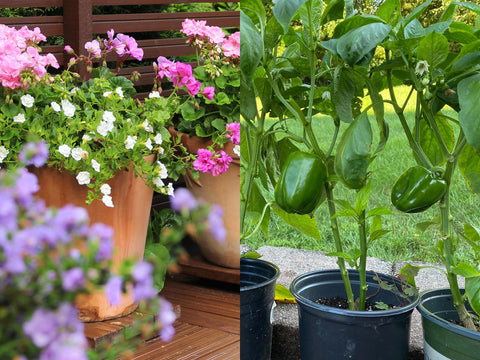Gardens are not just for adults; they can be a source of wonder and learning for children as well. In this blog, we'll explore how to get kids involved in gardening through fun and educational planting projects. These initiatives not only foster a love for nature but also provide valuable lessons that last a lifetime. So, let's dig into the soil and cultivate a passion for gardening in the next generation.

The Green Classroom
Gardens are like outdoor classrooms, offering countless opportunities for kids to learn and grow. Here's how:
- Science Lessons: Gardening teaches children about plant life cycles, soil science, and the roles of insects in pollination. It's a hands-on way to explore the natural world.
- Responsibility: Tending to plants instills a sense of responsibility. Kids learn that living things depend on them for care and nurturing.
- Healthy Eating: Growing their own fruits and vegetables encourages healthier eating habits. It's an excellent way to teach children where their food comes from.
- Creativity: Gardens allow kids to express themselves through design and plant selection, fostering creativity and imagination.
- Patience: Gardening teaches patience as children wait for seeds to sprout and plants to grow.
- Environmental Awareness: Kids learn about the importance of environmental conservation and the role plants play in our ecosystem.
Fun and Educational Planting Projects
- Pizza Garden: Create a "pizza garden" with tomatoes, basil, oregano, and peppers. Kids will love making pizzas with ingredients they grew themselves.
- Butterfly Garden: Plant flowers like milkweed and lavender to attract butterflies. Kids can observe the colorful visitors up close.
- Bean Teepee: Build a teepee structure with bamboo or sticks and plant pole beans around it. As the beans climb, a cozy hideaway forms underneath.
- Rainbow Carrots: Grow carrots in various colors – purple, yellow, and orange – for a rainbow of crunchy snacks.
- Sensory Garden: Include plants with different textures and scents, such as fuzzy lamb's ear and fragrant herbs. Let kids explore with their senses.
- Container Gardening: If space is limited, container gardening is a great option. Kids can plant herbs, flowers, or even small vegetables in pots.

Getting Started
To kickstart the gardening journey with kids, follow these steps:
- Choose the Right Plants: Opt for easy-to-grow and quick-to-harvest plants, like sunflowers, cherry tomatoes, or radishes.
- Child-Friendly Tools: Invest in child-sized gardening tools that are safe and easy to handle.
- Design Together: Let kids have a say in garden design. Ask them where they want to plant, what they want to grow, and how to arrange the space.
- Educational Elements: Incorporate labels with plant names, use a garden journal to record observations, and research together about the plants you're growing.
- Garden Creatures: Discuss the importance of bees, ladybugs, and earthworms in the garden. Kids can learn about these helpful creatures and how to attract them.
- Learning through Play: Turn gardening into a game. Have scavenger hunts to find specific leaves or explore colors and shapes in the garden.
The Joy of Harvest
One of the most exciting parts of gardening for kids is the harvest. It's a time for celebration, tasting, and sharing. Encourage kids to:
- Harvest Together: Teach them when to pick ripe produce. Celebrate the first harvest with a mini-feast.
- Cooking Adventures: Get kids involved in the kitchen by using their garden produce. Make salads, simple dishes, or herb-infused water.
- Sharing the Bounty: If there's an abundance of produce, let kids experience the joy of sharing by giving some to neighbors, friends, or local food banks.

Conclusion: Growing Future Gardeners
Gardening with kids is a transformative experience. It nurtures their curiosity, encourages outdoor play, and imparts essential life skills. Through fun and educational planting projects, children not only discover the wonders of the natural world but also develop a deep respect for it. So, if you have a patch of soil, a container, or even a windowsill, invite the kids in your life to join you in the garden. It's a gift that keeps on giving, fostering a love for nature and sowing the seeds of future gardeners.









